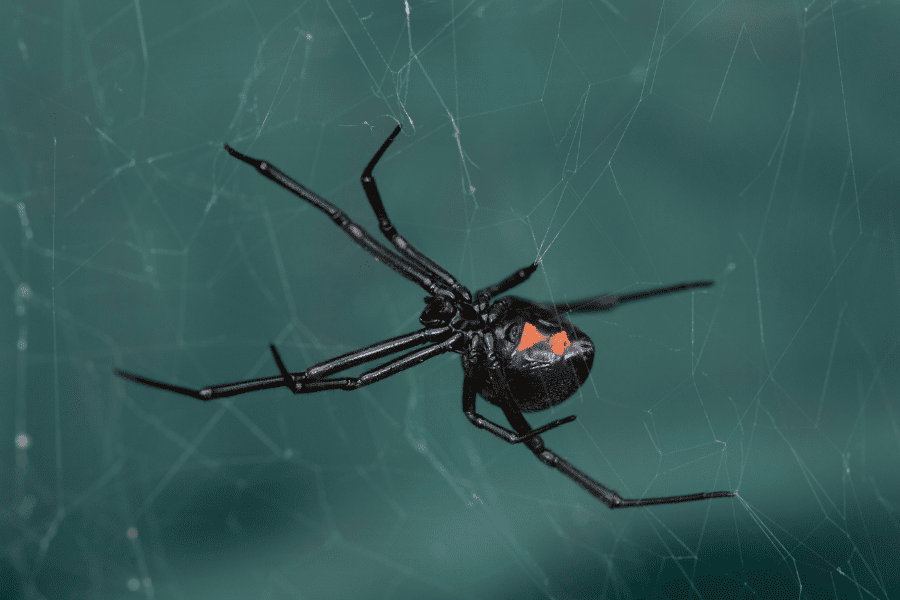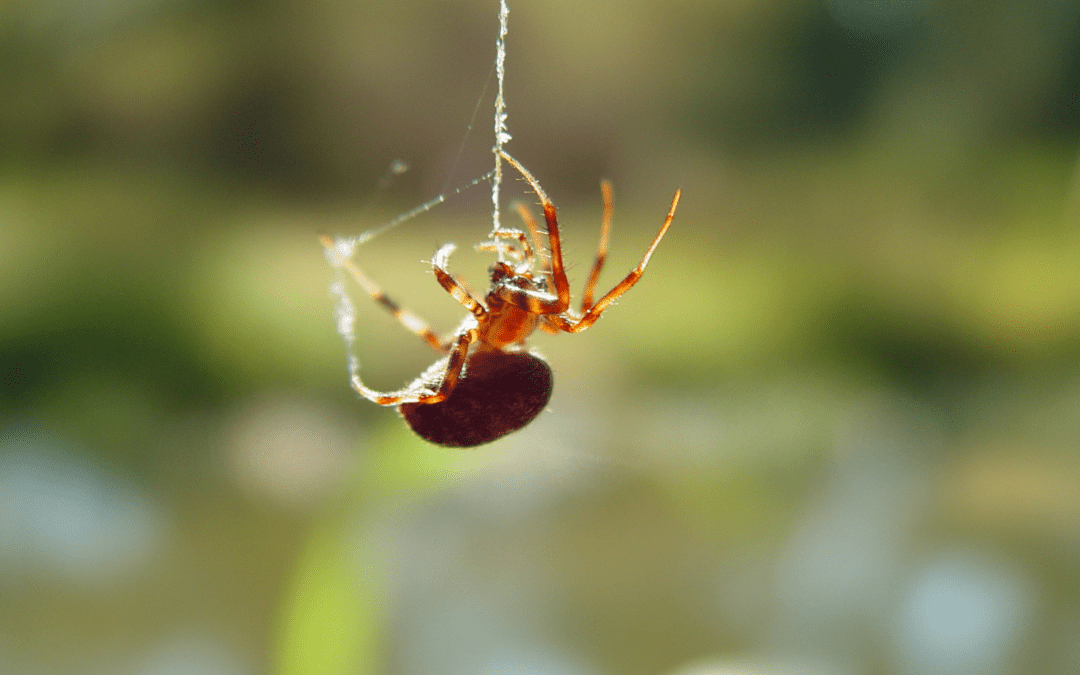READY TO GET STARTED?
REQUEST A FREE ESTIMATE
Fill out the form below or call (336) 226-1448 for a free, no-obligation estimate.

Due to the moderate weather found in North Carolina, spiders are able to thrive. With many different species of spiders living in the state, only two are found to be harmful to humans. The two associated with biting humans are the black widow and the brown recluse. If not cared for correctly, a bite from these spiders can result in death. Luckily, it’s very rare to be bitten by these two arachnids. You’re bound to encounter many other species, let’s break down the popular spiders found in North Carolina.
Black Window
The black widow spider is one of the most venomous spiders in North America. They have a shiny, black body with a red hourglass shape on their underside. They usually live in woodpiles, under rocks, or around homes, and are sometimes found in garages. They will, unfortunately, bite humans if they feel threatened, but luckily their venom isn’t life-threatening to most people.
Brown Recluse
This well-known venomous spider is found in most southern states and North Carolina is one of its home states. They appear light to dark brown and have a violin-shaped marking on their head. Mostly found living in woodpiles, under rocks, or around homes, they tend to stay away from people, hence their name, and prefer dimly lit areas, such as basements or attics. They are typically not aggressive and will only bite if they feel threatened.
Wolf Spider
These spiders are common here and can be found living under rocks, in tall grass, or near our homes. They are dark brown with white markings on their heads and abdomens. They are known to be one of the larger species found in homes, growing up to two inches long. Their bites are harmless, and it will usually only happen if they feel threatened.
Cellar Spider
Being one of the most common spiders found in North Carolina, these small, long-legged creatures can grow up to one inch long. They appear to have a dark brown body with light yellow markings on their abdomen. They can live indoors and outdoors. They are known to be a more beneficial type of spider to keep in your home because they keep populations down of other pests, including other spiders.
If you think you have a spider problem evolving in your home, feel free to reach out to your local pest control company and we can create a customized solution.

Temperatures are getting cooler and we are starting to spend more time indoors. We aren’t the only ones inside, though. Many pests will appear indoors that weren’t around in the warmer months. Pests found inside are seeking warmer shelter to survive the winter and provide a food source. Let’s break down some common fall pests so you’re better prepared to prevent and treat them.
Fall is the time when leaves begin to fall and temperatures drop, but it’s also when most spiders begin to mate. You might see more spiders than usual indoors due to them trying to find a match. Outside, you may notice large webs around your home. Spiders are known for being beneficial and can reduce the number of other pests around your home, so be mindful when knocking down their webs outside.
Fire ants build large mounds in soil and near structural foundations. They can even find their way indoors through cracks in buildings. When they feel threatened or disturbed, they can cause multiple painful stings and can become aggressive. Fall is the best time to treat fire ant mounds as this is when they’re most active.
Like us humans, rodents are also in search of food and warmth in the cooler weather. Your home can become a welcoming environment for them. Be sure to rodent-proof your home by sealing gaps or openings around your home’s exterior. Keep outdoor vents covered, repair any holes or tears in window or door screens, and install weatherstripping around doors.
You may notice an increase in overwintering pests, such as ladybugs, boxelder bugs, and stink bugs. These types of pests often resist traditional treatments with pesticides, so it’s best to take measures around your home to prevent more from coming inside. They’ll gather near the warmest areas of your home, usually on the south and west-facing sides. In these areas, check for any openings or gaps around windows and doors.
If you notice an influx of pests around your home this fall, reach out to your local pest control company who will provide you with a treatment plan that works best for you and your family.